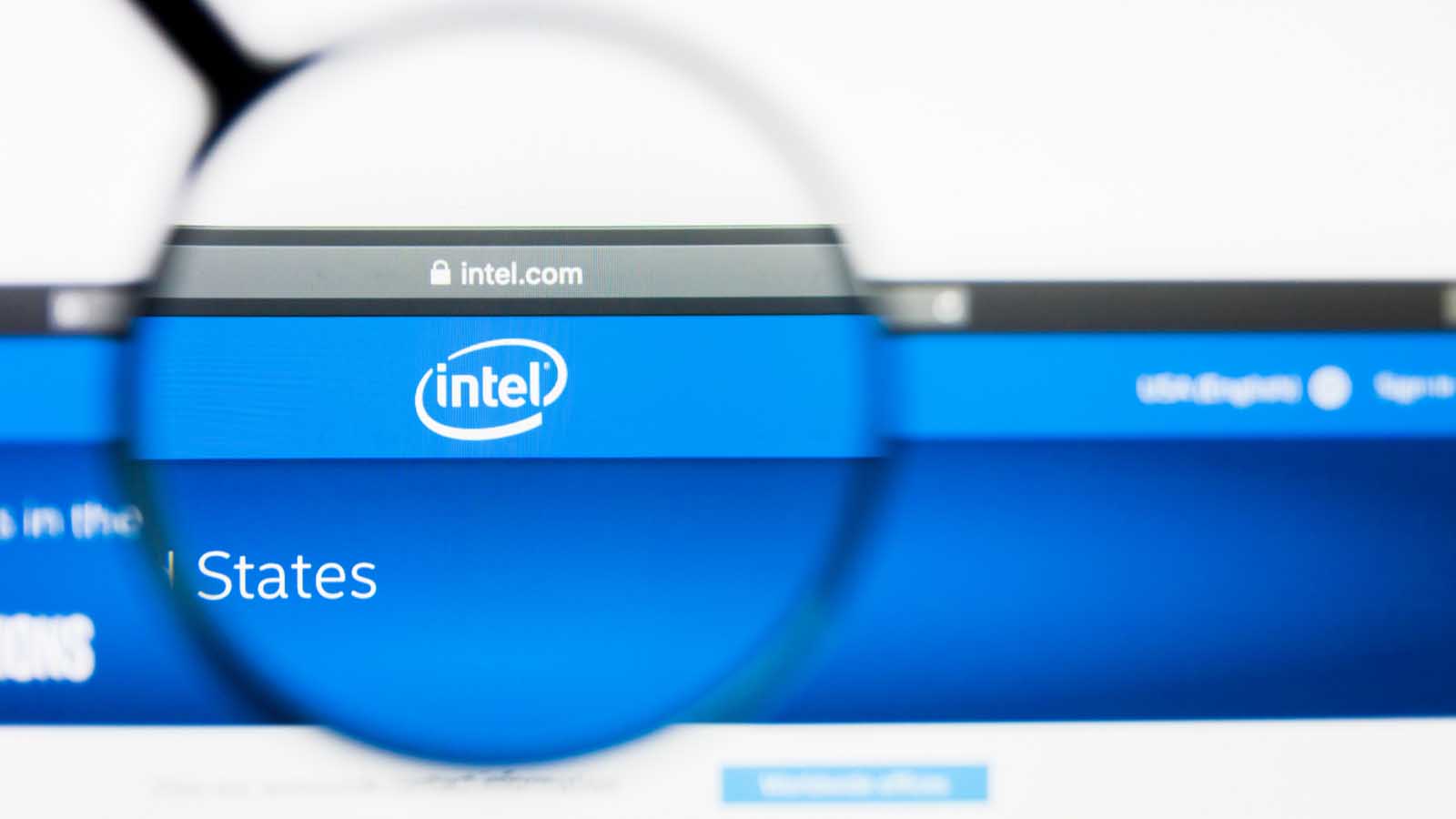Intel (NASDAQ:INTC) looks poised to outperform going forward, driven by multiple, strong, positive trends. Specifically, Intel stock is well-positioned to benefit from the growth of the cloud, data usage, AI and 5G.

On the competition front, Intel will benefit from the apparent closing of the gaps between its products and those of AMD (NASDAQ:AMD). Moreover, the valuation of Intel stock should rise closer to that of AMD and Nvidia (NASDAQ:NVDA).
Encouragingly, Intel’s Q4 data center revenue reachedan all-time record of $7.2 billion last quarter, versus analysts’ average outlook of $5.4 billion. The unit’s top line jumped 19% YoY, driven by strong demand from cloud infrastructure companies. Intel’s revenue from cloud infrastructure vendors soared 48% YoY, Intel CFO George Davis told Reuters. Intel’s overall results easily beat analysts’ average outlook.
Meanwhile, Intel’s chips are proving to be popular with developers of AI systems.
“Demand for our Intel Xeon scalable processors is very strong as customers continue to make Xeon the foundation for their AI infused data center workloads,” Intel CEO Bob Swan said on the company’s fourth-quarter results conference call last month. “One of the reasons Cascade Lake is our fastest ramping Xeon (computer processing unit) is its unrivaled AI performance,” he added.
Data centers are “increasingly are running AI algorithms to analyze data to, for instance, identify customer trends that otherwise might be too hard to spot,” Dow Jones reported in December.
Swan added that the company will launch new Cooper Lake chips in the first half of this year. The new chips will enable AI systems to be trained up to 60% faster than their predecessors, he stated. Facebook (NASDAQ:FB) is one of the companies reportedly using Intel’s chips for AI. It sounds like Intel will continue to win a lot of deals from AI users.
A Closer Look at Intel Stock
Potentially making Intel even stronger in the AI arena, the company in December bought Israel-based Habana Labs for about $2 billion. A maker of AI chips, Habana will “(help) advance our AI offerings for the data center with high-performance training and inference processors and a standards-based programming environment to address evolving AI workload, ” Swan said.
The company has stated that it expects data centers’ demand for AI chips to reach nearly $12.5 billion in 2024. Intel’s 2019 revenue from its AI-based products came in at $3.8 billion, so the company can likely meaningfully increase its AI revenue over the next few years.
Swan identified Chinese eCommerce giant Alibaba (NASDAQ: BABA) as one of Intel’s 5G customers.
Closing the Gap With AMD
Intel plans to release nine new 10-nanometer chips this year, including a mobile CPU, a 5G chip, an AI accelerator, and a Xeon chip for servers, data storage and networking. That should help INTC close the gap with AMD, as TheStreet noted that 10-nanometer chips are “competitive with the 7nm Taiwan Semiconductor (NYSE:TSM) node used for AMD’s latest PC and server CPUs.”
TheStreet also reported that Intel is growing rapidly in areas where AMD “either doesn’t compete or has a very limited presence, including “storage and network processors, Ethernet chips, vision processors for driver-assistance systems and server CPUs for telco networks and IoT/edge computing deployments.”
Moreover, Intel is expected to announce new Xeon Scalable server processors for servers that will include more cores than its previous offering.
After launching the new processors, Intel will “do a better job of spec matching against AMD’s [processors],” CRN quoted Marc Fertik, vice president of technology solutions at Ace Computers, an Intel partner, as saying.
Similarly, the company last month unveiled its new 10-nanometer Tiger Lake processors that will offer “better graphics performance and increased use of artificial intelligence to handle processing workloads.”
Additionally, Intel stated that the processors’ performance will be at least 10% better than its predecessor. And importantly, TechRadar recently reported that Intel’s upcoming flagship Core i9-10900K chip for desktop processors “handily beats” AMD’s competing Ryzen 9 3900X chip in terms of speed.
According to PCGames, the performance of Intel’s new chip will be about 15%-16% better than its predecessor.
Intel has been cutting prices on a number of its products that compete with AMD’s offerings. For example, INTC lowered the price of its Core i9 chips for desktops by 40%-50%, and it cut the price of its L-series Cascade Lake Xeon chips for servers by over $4,700.
I think the company’s strategy is to lower the margins of its products that compete with those of AMD. At the same time, it will look to keep its overall margins at least stable by selling more high-margin products in the segments in which AMD is not competing.
Finally, recent data on AMD’s share of the desktop market presented by tomsHardware appears to be upbeat for Intel stock. During each of the last three quarters of 2019, AMD’s share rose 0 percentage points, 0.9 percentage points, and 0.3 percentage points, according to the data.
During that time, the company’s market share rose by just 1.2 percentage points. By contrast, over the three quarters that ended in the first quarter of 2019, its market share jumped by 4.1 percentage points. The data indicates that AMD’s market share gains have slowed meaningfully to a level that will not hurt Intel very much.
The Bottom Line on Intel Stock
The forward price-earnings ratio of Intel is only 13.4, versus 31.75 for AMD and 34.5 for Nvidia, respectively. I believe that as Intel’s growth accelerates due to its increased penetration of the AI and 5G markets, while it performs better against AMD, its 2020 guidance for roughly 2% revenue growth will prove to be extremely conservative.
Consequently, the multiple of Intel stock will move closer to the levels of AMD and NVDA, enabling INTC to handily outperform the market.
As of this writing, the author did not own the stocks of any of the aforementioned companies.
